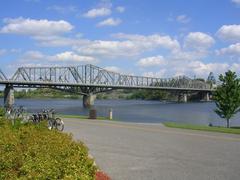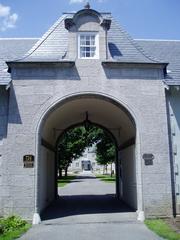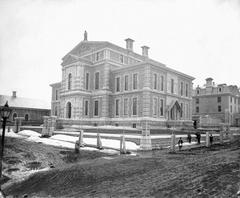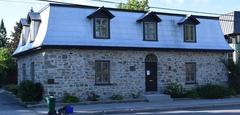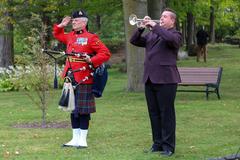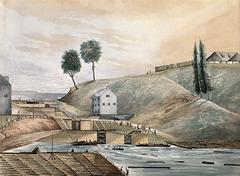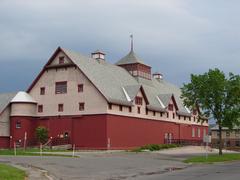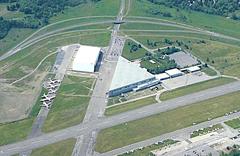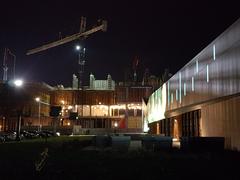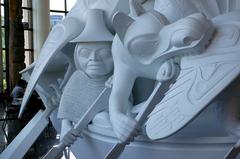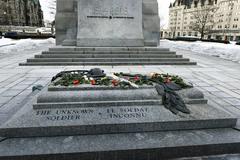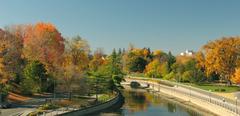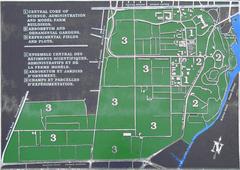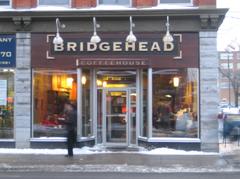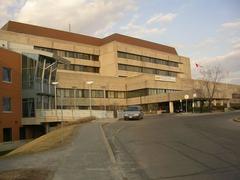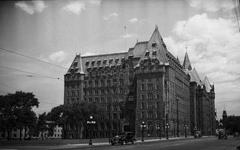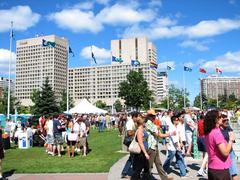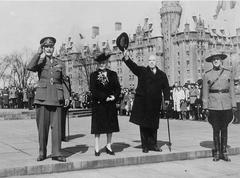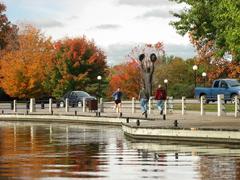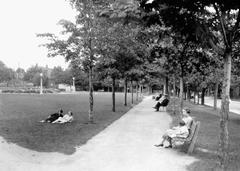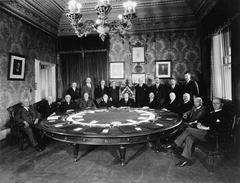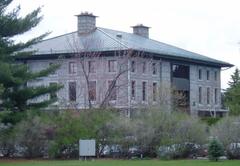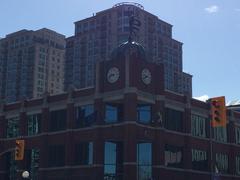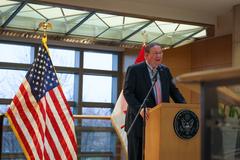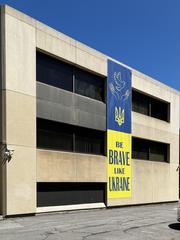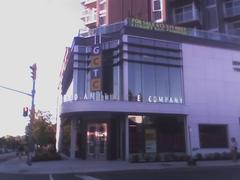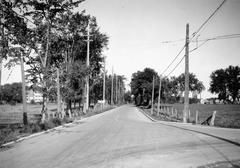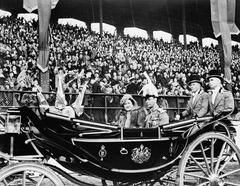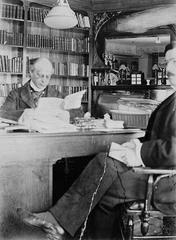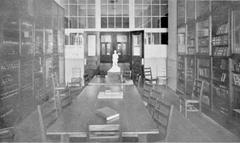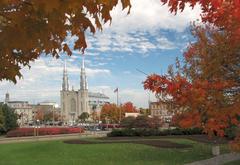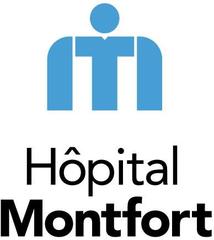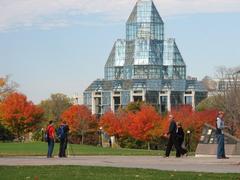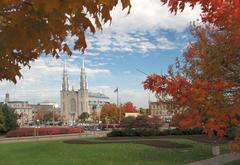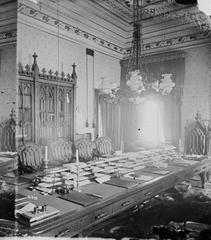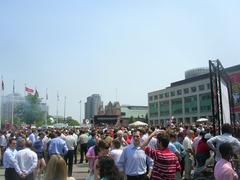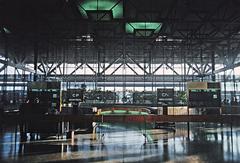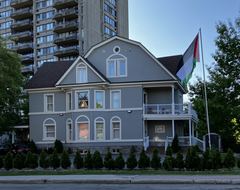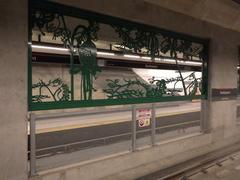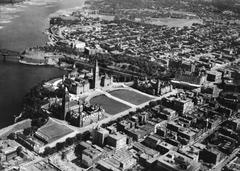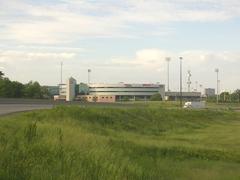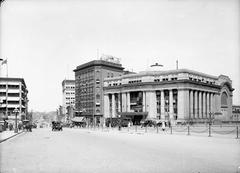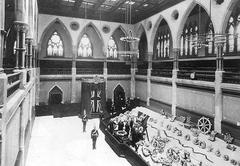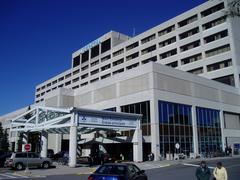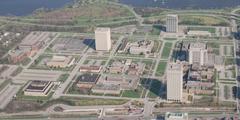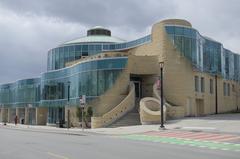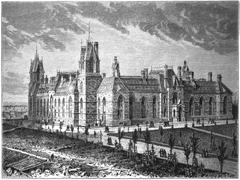Bank Street Ottawa: Visiting Hours, Tickets, and Historical Sites Guide
Date: 14/06/2025
Bank Street is not only one of Ottawa’s most iconic thoroughfares but also a living testament to the city’s rich history, diverse culture, and thriving community. This comprehensive guide details the story behind Bank Street, from its 19th-century origins to its current role as a bustling commercial and cultural hub. Here, you’ll discover essential information on visiting hours, ticketed attractions, accessibility, travel tips, and recommended nearby sites to make the most of your visit.
Table of Contents
- Introduction & Historical Overview
- Notable Landmarks and Institutions
- Visitor Information & Travel Tips
- Infrastructure and Modern Transformations
- Historical Events and Community Life
- Frequently Asked Questions (FAQ)
- Conclusion
- References
Introduction & Historical Overview
Early Origins and Naming
Bank Street, or Rue Bank, traces its roots to the early 1800s. Contrary to popular belief, its name stems from its original function as a route connecting the banks of the Ottawa and Rideau Rivers—not from financial institutions. The street’s northern segment was once called Esther Street, after Colonel By’s wife, while its southern portions were known as Prescott Road (Ottawa City Archives).
19th Century Development
Bank Street’s growth paralleled Ottawa’s transformation from Bytown, a lumber trading post, into Canada’s capital in 1857. The street swiftly became a vital artery for commerce and transportation, connecting downtown Ottawa to surrounding rural communities such as Blossom Park and Greely (City of Ottawa).
Role as a Provincial Highway
The 20th century saw Bank Street designated as Ontario Highway 31, reflecting its importance as a regional transportation corridor. Although the province relinquished control to the City of Ottawa in 1998, the southern stretch is still known as Ottawa Road #31 (Ontario Ministry of Transportation).
Urban Growth and Commercialization
Bank Street evolved into Ottawa’s commercial backbone, especially between Wellington Street and Gladstone Avenue—an area now known as the Bank Street Promenade. This vibrant strip is lined with shops, restaurants, and services, encapsulating the ongoing vitality and urban dynamism of the corridor (Ottawa Tourism).
Cultural and Social Significance
Bank Street is a central gathering place for Ottawa’s diverse communities. The area between Somerset Street West and Gladstone Avenue is home to Ottawa’s official LGBTQ+ Village—an inclusive neighborhood hosting the annual Capital Pride Festival each August (Capital Pride). The street also features lively nightlife, public art, and is adjacent to major cultural institutions like the Bank of Canada Museum.
Notable Landmarks and Institutions
-
Bank of Canada Museum
Located at 30 Bank Street, the museum provides interactive exhibits on Canadian currency and financial history. Open Tuesday to Sunday, 10 AM to 5 PM, with free admission (advance reservation recommended) (Bank of Canada Museum Tickets). -
Lansdowne Park
In The Glebe, Lansdowne Park is a multi-purpose venue hosting sports, concerts, festivals, and the Ottawa Farmers’ Market. Event schedules and ticket information are available online (Lansdowne Park official schedule). -
Canadian Museum of Nature
Just steps from Bank Street, this museum features natural history exhibits within a striking historic building (Voyage Tips). Regular admission fees apply. -
Shopping Districts
Billings Bridge Plaza and South Keys Shopping Centre exemplify Bank Street’s retail evolution, generally open 10 AM–9 PM. -
Public Art and Window Displays
Throughout the year, Bank Street bursts with creative window displays and murals, especially during festivals (Adventure Awaits).
Visitor Information & Travel Tips
-
Getting There
Bank Street is accessible via OC Transpo buses and features dedicated bike lanes in several sections. -
Accessibility
Most venues and sidewalks are wheelchair accessible. The Bank of Canada Museum and Lansdowne Park offer additional accommodations (City of Ottawa Accessibility). -
Best Times to Visit
Festivals such as Capital Pride (August) and the Bank Street Festival (June) offer especially vibrant atmospheres. -
Guided Tours
Local tour operators offer historical and cultural walking tours. Advance booking is recommended. -
Dining and Shopping
Bank Street’s dining scene spans global cuisines, with noted vegetarian/vegan spots (e.g., Pure Kitchen) and specialty drink shops (e.g., Knyota Drinks). Unique boutiques and vintage stores line the street (Travelling King). -
Public Transit & Parking
OC Transpo buses run frequently. Parking is limited, especially in busy sections; public transit and cycling are recommended.
Infrastructure and Modern Transformations
Bank Street has seen significant upgrades, including road widening and improved pedestrian/cycling infrastructure, particularly south from Leitrim Road to Blais Road. These projects strive to balance heritage preservation with modern urban needs (City of Ottawa Infrastructure Projects).
Historical Events and Community Life
Bank Street is the backdrop for parades, protests, and celebrations that reflect Ottawa’s civic spirit. Annual highlights include the Capital Pride Parade, the Canadian Tulip Festival, and live music events at local venues (CBC News).
Frequently Asked Questions (FAQ)
Q: What are the visiting hours for Bank Street attractions?
A: Bank Street itself is open 24/7. Most shops/restaurants operate 10 AM–9 PM. Major attractions like the Bank of Canada Museum are open Tuesday–Sunday, 10 AM–5 PM; Lansdowne Park hours depend on events.
Q: Are there fees or tickets for Bank Street?
A: The street is public and free to visit. Some attractions (like museums or sports events) may require tickets.
Q: Is Bank Street accessible for people with disabilities?
A: Yes, most venues and sidewalks are wheelchair accessible. Check with individual attractions for specific accommodations.
Q: Are guided tours available?
A: Yes, local companies offer tours focusing on history, architecture, and culture. Advance booking is suggested.
Q: When is the best time to visit?
A: Festivals (especially in June and August) provide extra excitement, but Bank Street is lively year-round.
Conclusion
Bank Street is more than just a road—it’s a tapestry of Ottawa’s past and present. Whether you’re strolling through heritage neighborhoods, attending dynamic festivals, or sampling diverse cuisines, Bank Street offers a truly immersive Ottawa experience. Plan your visit today to explore the city’s history, community spirit, and vibrant urban life.
Call to Action
For the latest event information, guided tours, and insider tips, download the Audiala app. Explore more posts on Ottawa’s neighborhoods and follow us on social media for updates. Enhance your visit with images and interactive maps featuring Bank Street’s key landmarks—alt tags such as “Bank Street Ottawa historic sites” and “Visiting Bank Street attractions” are recommended for accessibility.
References
- Ottawa City Archives
- City of Ottawa
- Ontario Ministry of Transportation
- Ottawa Tourism: Bank Street Promenade
- Capital Pride
- Bank of Canada Museum Tickets
- Lansdowne Park Events
- City of Ottawa Infrastructure Projects
- Adventure Awaits
- Travelling King

